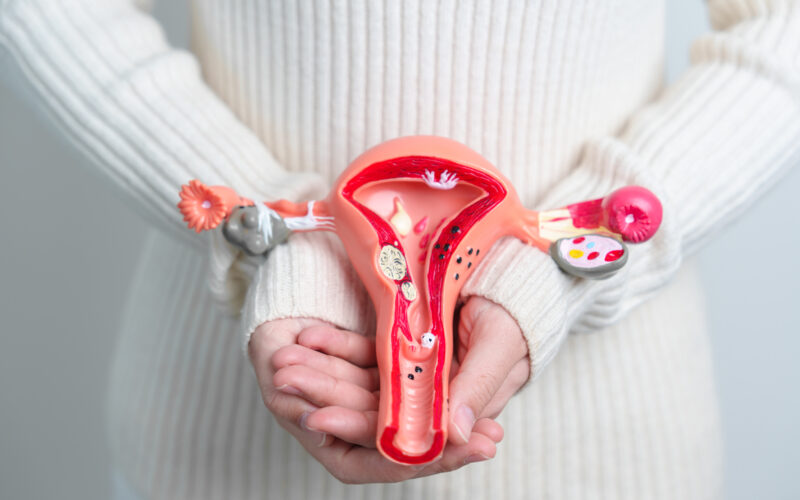In part 1 of this 2 part series, I interviewed Dr. Kathleen Raviele and Dr. Lester Ruppersberger, two OB/GYNs with a combined 70 years of clinical experience, about the reasons a hysterectomy could be medically indicated, perhaps emergently so. In this 2nd part, I share their knowledge and insights on the complications of hysterectomies, whether too many hysterectomies—which rank second after Cesarean sections as the most common female surgery in the United States—are being performed, and the advantage that a medical provider trained in restorative reproductive medicine (RRM) offers to women who suffer from the reproductive problems for which hysterectomy is sometimes recommended.
What are the short-term and long-term complications of hysterectomies?
1,000 women Google-search “complications of hysterectomy” each month. But how common are complications, really? Dr. Raviele summarized, “Mostly, women do great with hysterectomy.” Dr. Ruppersberger said, “Short-term, you’re looking at [the possibility of] bleeding, infection, damage to the bowel, bladder, nearby organs.” The likelihood of hysterectomy complications occurring is connected to the reason the surgery is being done, prior procedures the woman may have had on her uterus that caused scarring, and the skill and experience of the performing surgeon.
Long-term, some women may suffer sexual dysfunction due to nerve damage or scarring from the surgery. While the ovaries are not routinely removed during a hysterectomy, if a premenopausal woman does have them removed at the same time as her hysterectomy, she can expect to experience the symptoms of menopause. Dr. Ruppersberger noted that a restorative reproductive medicine (RRM) provider can recommend appropriate hormone replacement therapy such as use of “bioidentical” hormones, along with “some vitamins, some herbals, diet, and an exercise regimen” to alleviate these symptoms. If a woman is postmenopausal at the time of her hysterectomy, she would be unaffected. If she is perimenopausal, she could expect an exacerbation of symptoms.
Some women may experience anxiety and/or depression post-hysterectomy. These are not direct hysterectomy complications, but may be due to the loss of fertility if further childbearing was desired. Dr. Raviele said that emotional distress is most likely to occur in younger women who undergo hysterectomy for advanced cervical or other reproductive cancers, and whose childbearing ability is prematurely and permanently ended in the process.
Are too many hysterectomies happening in the United States?
Estimates vary, but roughly 600,000 hysterectomies are performed in the United States each year, usually on women aged between 40 and 50, according to Dr. Ruppersberger. Dr. Raviele believes that the vast majority of present-day hysterectomies are medically indicated or medically appropriate for the patient. This means “there’s a clear-cut diagnosis, the hysterectomy is warranted, the patient’s in agreement and the doctor’s in agreement.” In contrast, she recalled, “when I was going through medical school in the 1970s, the indication for hysterectomy was [simply] the presence of a uterus. [Now] we have tissue committees in hospitals that look over the reasons for hysterectomy and compare pathology reports with the reasons a doctor said a hysterectomy was being performed.”
What about hysterectomies for gender dysphoria?
The one caveat Dr. Raviele specified was when hysterectomies are performed on girls and women suffering from gender dysphoria, who have their uterus and ovaries removed so they no longer have a period. “This is not a reason that we normally do surgery on a woman. We don’t do something to take out a normal, functioning part of her body.” Finland, Sweden, the Netherlands, and the UK, all of which were once at the forefront of aggressive hormonal and surgical interventions for pediatric gender dysphoria, have now begun restricting those same interventions, citing their uncertain, albeit potentially serious risks, and because, as Dr. Raviele states, “we know about 80% of [these girls] revert to understanding and being happy with their gender by the time they’re in their 20s,” if they have been allowed to develop naturally, i.e., they haven’t begun any “gender-affirming” treatments (since many who start hormone blockers and cross-sex hormones will continue on the full path to surgical interventions), and if they have not been socially transitioned. Dr. Raviele furthermore stressed, “We don’t treat psychological conditions with surgery.”
Cases when hysterectomies may not be medically indicated
Sometimes, Dr. Ruppersberger said, women are recommended for hysterectomies for unexplained, nonspecific symptoms like chronic pelvic pain or abnormal bleeding patterns, as the Scottish woman in the Newsweek article whom I highlighted in Part 1 suffered. Dr. Ruppersberger emphasized, “The important thing is that you need to get an appropriate diagnosis, you need to know exactly what the rationale is, what’s the reason that this woman has whatever symptoms she has.”
Unfortunately, Dr. Ruppersberger said, “there are a lot of women who have thyroid disease, adrenal disease, other hormonal disorders, [or] polycystic ovarian disease, that are just not being managed properly. And, there are some surgeons who, for either lack of time, talent, or whatever decide to tell the patient they need a hysterectomy. And I would always tell my patients to get another opinion.”
Gray areas
Dr. Ruppersberger reported that some postmenopausal women undergo hysterectomies for pelvic organ prolapse, meaning that the pelvic floor muscles become so stretched and weakened that the top of the vagina or even the uterus sags down through the opening of the vagina and outside the woman’s body. While surgical attempts to push the prolapsed tissue back up into the woman’s body and “tack” it to a nearby organ have “abysmal” success rates, pelvic floor physical therapy can be an excellent treatment option for women suffering from mild to moderate pelvic organ prolapse (you can learn more about PFPT in our podcast with Dr. Jennifer Tippmann, here).
Both Dr. Ruppersberger and Dr. Raviele reported that pessaries can also satisfactorily manage prolapse for many women. In postmenopausal women, though, hysterectomy might make the most sense for a woman with severe prolapse.
How do RRM providers offer a different approach?
A restorative reproductive medicine (RRM) provider is trained to conduct a deep dive into root causes to establish what’s wrong, whereas many women’s reproductive issues are often simply Band-Aided with hormonal birth control, which does not actually cure any reproductive condition, until the symptoms or disease progression are so severe that something as invasive as a hysterectomy may be considered the next step.
Dr. Raviele explained the value of working with a RRM provider to ensure an accurate diagnosis and pursuit of all appropriate conservative measures to treat the types of medical problems that are sometimes ultimately resolved with a hysterectomy. She has undergone training in the Two-Day Method, Cycle Beads, Couple to Couple League, Billings Ovulation Method, Marquette Method, and the Creighton Method, along with NaProTECHNOLOGY medical consultant training.
She stated, “Once you understand women’s cycles and understand their fertility, it’s much easier to time [administration of] progesterone so that if a woman does have abnormal bleeding—and she does not have polyps, and she doesn’t have endometriosis, and she doesn’t have any kind of precancerous lesion—you’re timing the progesterone correctly to give her a regular period.” Overall, “[RRM] certainly allows you to appreciate women’s fertility much more and be able to protect it and preserve it, and also to know when there’s a problem.”
How are RRM providers different from conventional OB/GYNs?
Readers may wonder whether FEMM or Neo Fertility or NaProTECHNOLOGY-trained medical consultants have specialized training to address the kinds of issues for which women are recommended to undergo hysterectomies. Dr. Raviele shared that having general NaProTECHNOLOGY medical consultant training, for instance, doesn’t lead RRM providers to have additional technical skills beyond what a conventional medical provider would have (though a small number of doctors who are medical consultants may go on to do an intensive fellowship program that includes training on advanced surgical techniques).
However, FEMM or Neo Fertility or NaProTECHNOLOGY training can be useful in dramatically reducing time between symptom onset and diagnosis for reproductive issues like endometriosis. Dr. Raviele observed that, on average, a woman may experience 12 years of symptoms before receiving an endometriosis diagnosis. In contrast, a RRM provider who can read fertility charts will see tell-tale signs in the woman’s fertility charting that can lead to a diagnosis much, much quicker. “I think your antennae are up much faster with NaProTECHNOLOGY or the Marquette Method so you can really hone in on what their cycles are like and what their symptoms are so you can pick up problems.”
Dr. Raviele “looked at women’s charts for thirty years, and I could not have functioned as a gynecologist without looking at women’s charts and correlating them with what their symptoms were. It was just a tremendous help… it’s really like a woman’s health record. Is she ovulating regularly? Does she have healthy cycles?”
The bottom line
Dr. Raviele summed up, “We have to have a balance. We don’t want to say that hysterectomies are never indicated. We [also] don’t want to say that hysterectomies should be the first treatment without doing good diagnostics, without doing appropriate conservative treatments first, even for endometriosis or fibroids.” Yes, as with any surgery, there is potential for short-term or long-term hysterectomy complications. But for many women, Dr. Raviele found, a hysterectomy “can be a life-changing—for the better— experience.”
Additional Reading:
If you’re considering a hysterectomy for endometriosis, read this first
Signs you (might) need a hysterectomy







